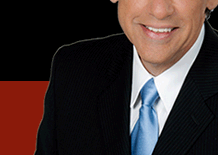 Media
and PURSUITS: To Pursue or Not Pursue? Media
and PURSUITS: To Pursue or Not Pursue?
By Jim Holcomb
(2/27/03) Mayor James Hahn and Police Chief William Bratton
asked the media to pull the plug on televised police pursuits
because they encourage similar activity by drivers who might
otherwise just surrender.
The issue, however, is not the pursuits per se but the public’s
right to be informed. Were it not for the broadcast of these
pursuits, the very topic would not be the subject of public
outcry and discussion. Live news coverage brings focus to
the serious problem of how best to manage suspects who flee
from police and have the potential to cause serious injury
and death to innocent unsuspecting citizens.
Both as a police officer and as a helicopter reporter, I
have covered hundreds of pursuits. The one question that viewers
and fellow reporters always ask is why the LAPD does not seem
to take advantage of any the opportunities presented by suspects
during these chases to “box them in.”
Officially, LAPD spokesman will tell you “it’s
an officer safety issue.” More specifically, the LAPD
Manual regarding pursuit policy (section 1/555) clearly says:
“Tactics employed to stop a pursued suspect, such as
establishing a physical barricade (road block), boxing in,
heading off, ramming, or driving alongside the pursued vehicle
are strongly discouraged.”
Consider also that LAPD officers get no training of any kind
on pursuit intervention. The extent of their academy training
consists of a three day driving course limited to skid recovery
and high speed (code-3) driving—no pursuit intervention.
Once in the field they seldom, if ever, get re-currency training
on the high-speed track.
Then there is policy training. By practice, LAPD supervisors
must touch on several major topics at least once every thirty
days during “roll call training.” One topic LAPD
management drills into its officers is the theory of pursuit,
and post pursuit, discipline. This is where officers are reminded
not go beyond the limits of their training or to do anything
that could cause the Department to become liable during a
pursuit.
>From my experience as a police officer in the field,
and from recent discussions I have had with active officers;
they tell me there have been several instances where resourceful
officers wanted to end a chase by cutting off a suspect’s
escape route. The reason they didn’t was our fear—fear
they would have a personnel complaint initiated against them
for wandering beyond the strict interpretation of LAPD policy.
It’s the Risk Management Group of the LAPD, they say,
that shutters at the thought of potential city liability should
intervention be blamed for causing an accident. Meanwhile,
those same Risk Management folks are blind to the liability
of failing to act even when suspects unwittingly provide the
opportunity.
In some cases, however, the live coverage of police pursuits
clearly demonstrates the need for finding a better way to
manage pursuits.
One case in point is the LAPD pursuit (2001) where the suspect
drove slowly around the Rampart Police Station for almost
three hours. Several times he stopped and chatted with news
crews, then wandered off only to go around the block. LAPD
seemed paralyzed and so was the community! Officers even blocked
the driveway to their police station because the suspect wanted
to drive in! It wasn’t until a Captain and Lieutenant
from the Rampart Division got in a car, drove past all the
black and white police cars, and forced the suspect curb that
the chase finally ended. That suspect was wanted in connection
with the stabbing death of his girlfriend in El Monte.
Officers I spoke with lamented, had they done what their
supervisors did, they would have faced criticism and, most
likely, disciplinary action for acting out of policy!
There are also times when the camera catches something the
cops miss. Recently, in San Diego, the police lauded a local
television station with providing video of pursuit suspects
throwing evidence from their car as officers were chasing
them. The police said, had it not been for the news helicopter
overhead, they would not have known the evidence had been
discarded or connected it with the suspects.
Pulling the plug, or government censorship, is not a precedent
the media should embrace. Rather, let the public vote with
their choice to watch or simply change channels.
About the Author
JIM HOLCOMB is a former Reporter-Pilot for KCOP-TV in Los
Angeles. He is also retired 26-year veteran of the LAPD and
has worked in several diverse assignments, including tactical
flight operations in the Air Support Division.
|

















